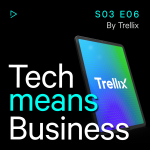Pros and cons: communication channels to engage customers

Without customers, you have no business. That means keeping its customers happy is a business’s first priority, so exceptional customer service is non-negotiable. And in the 21st century, exceptional customer service means exceptional customer communication and engagement.
The days of sending a smudged fax of information to a customer who left a message on your answering machine are gone. Nobody has the time to waste or the money to spend on companies who communicate like it’s the Eighties.
These days, there are a whole range of real-time interactive communication channels to add value to the customer’s relationship with any business – video chats, social media, instant messaging, live chats, emails, and SMS – and that’s just the tip of the iceberg. If you’re not using all available channels to enrich your customers’ experience of doing business with your company, you’re leaving loopholes. And loopholes are the reasons customers find to go somewhere else.
To get the most business benefit out of the array of modern communication channels, you have to consider quality of communication management, as well as quantity. What can you offer, staff, and fulfill well by way of customer communication and engagement?
If you’re not doing it well, then your omni-channel customer service strategy is actively working against your customers’ satisfaction, and therefore against your business. That means businesses need to choose which customer communication channels to focus on and to integrate, because there are pros and cons to all of them, and you need to do each of them well to ensure they’re worth your investment.
Things You Can Do
Website
Conventional wisdom says that your website is your shop window. In the 21st century, it’s as likely to be the first thing your customers see about you as any bricks-and-mortar building or flesh-and-blood staff. But these days, a website is much more than a one-way channel of information about a company’s products, services, and brand.
YOU MIGHT LIKE

Integrated comms are smart comms: RingCentral
Pros:
If you get it right, you can use your website to:
- Create regular visitors for news and features, both about the company and the sector as a whole
- Offer website-only discounts
- Complete transactions from start to finish, and even through to electronic invoicing and receipts
- Get initial consent to maintain an ongoing relationship with customers – and potential customers – through email and SMS updates
- Allow customers to send you questions direct
- And integrate a chat function to allow for direct interaction with customers
The chat facility is particularly useful in the modern world, where for instance customers with a hearing impairment, or with social or telephone anxiety, may fear the prospect of a long, complex telephone conversation with many questions. In fact, some research indicates that customers are up to 50% more likely to buy from a website that has an effective live chat function.
Chatbots can be usefully integrated into your website too – though as yet they’re best used as sales and FAQ tools, rather than as true customer engagement tools.
Cons:
- If your website is your shop window though, it needs to have new things to look at regularly, otherwise like a bricks and mortar shop window it will begin to feel static, dowdy, and won’t keep bringing customers to you. That entails both a staff cost, to keep the website regularly updated with fresh content, and possibly a training cost if you’re recruiting a web manager from within existing staff
- Similarly, if you’re going to run a live chat function through your website, you’re going to need a reliable, high-quality chat software system, and staff to be on hand to engage with customers the moment they initiate a chat
- If you’re going to use chatbots, make sure you only use them in ways that help your customers. Never send a chatbot to do a live chat operator’s job, or you’ll frustrate more customers than you engage
YOU MIGHT LIKE

Unbundled Communications Wins in the Cloud
Email is still a highly viable customer engagement tool, not least because email can be used as a customer’s gateway to your website, and to various unique offers, and the company’s gateway into the customer’s mind on a regular basis.
Pros:
If your customers give you their email address, you can use it to:
- Reward them with regular offers (reducing prices but increasing the likelihood of sales)
- In some businesses, send reminders of upgrades or replacements on a sensible timescale (hopefully ensuring continued use of the company’s products or services)
- Deliver electronic receipts, invoices, warranties, etc., for bulk-free filing and record-keeping
- Adopt an Amazon-style recommendation system, using their purchase history with the company – you bought this, so you might like…
- If the customer has also supplied their date of birth, prepare ‘reward’ emails targeted to celebrate their birthday – and let them get themselves a gift from you
Cons:
YOU MIGHT LIKE

Extended Detection & Response from Trellix
When using email, though, it’s important not to abuse the privilege of access to your customers’ inbox. Doing that can turn email quickly from a customer engagement tool into a customer repulsion tool. For example:
- If your customer buys a product or service from you, don’t immediately bombard them with offers for products or services that are essentially the same. They just bought that product; they don’t need another one immediately – and the email will irritate them
- Use an intelligent email scheduler, or the offers and emails from the company can easily become like texts from a clingy partner – too many and they’ll start to ghost you (the very opposite of what you want)
- Email is better used as a company-to-customer tool, rather than a customer-to-company tool, because outgoing emails can be prepared ahead of time, where responses to incoming emails require staff there and then to respond. Email is not the best response tool for customer requests, as it can often take up to 12 hoursto get back to an individual customer request
Email is a powerful way of making customer relationship management feel personal and 1-to-1. But like every 1-to-1 relationship, its effectiveness depends on responsibility, responsiveness, and good judgment.
Social Media
Around 3.6 billion people worldwide use social media platforms. If you’re not using them for customer engagement, click-through and sales, be assured of one thing – your competitors will be.
But as with the overall customer engagement picture, you can’t just “do it all” and expect to reap the best rewards. You have to learn how to use each social media platform effectively to maximize the benefit you get from them.
Why? Because your customers do. And companies that use social media well get significant rewards – 57% of consumers follow their favorite brand’s social media pages to stay up-to-date with their new offerings and other information.
They do that voluntarily, but that doesn’t mean it comes easily. It means those companies have invested in people and software that let them use the various social media apps to build that following and engage with their potential customers.
Pros:
An effective social media presence can:
- Define your brand as desirable both for your established customer-base and for a whole new audience
- Get you enormous amounts of free-at-the-point-of-delivery publicity, and make you a known name in your sector
- Build a spirit of community among your customers, followers, fans, etc.
Allow your company to directly canvass opinions from product or service users, to spur development in ways that people will buy
Piggyback on the popularity of user-generated content
- Let you run social media-specific stories, offers and viral PR campaigns
But beware. There’s something inherently feral about social media, in that it’s relatively free of gatekeepers – and almost everyone’s a critic, as McDonalds discovered when it launched its #mcdstories trend, expecting to garner user-generated cutesy and heartwarming stories of the McDonalds franchises where people first met, first took their kids, etc. The idea was to get viral, user-generated social media stories that put McDonalds at the heart of American family culture.
What it got instead was a litany of horror stories about the quality of its food, the insanitary conditions at many of its franchises, the length of time people waited for supposedly “fast” food, and much, much more. The hashtag got McDonalds a lot of viral publicity, certainly – but not of the kind it was looking for.

And while social media engagement might look like a free PR lunch, the business costs in terms of hardware, software, infrastructure, and staffing are by no means light. Social media is probably the most potent example of a means of customer engagement which can go badly wrong in a big hurry if it’s not done well.
Cons:
- Everyone’s a critic – and on social media, your ability to gatekeep is reduced
- A failed social media campaign costs as much time and effort as a successful one
- If you’re going to use social media for customer engagement, you need to do it right and regularly – and that involves significant investment costs
- User-generated content is just as likely to damage your brand as enhance it
Video Chats & Conferencing
Video chats and conferencing are relatively new strings to a company’s customer engagement bow. As such, they’re still finding their place among the established communication platforms companies use for customer engagement.
While technologies like Zoom and Teams helped businesses keep going throughout the Covid pandemic, the use of face-to-face video chat for direct customer engagement and/or sales is still relatively undeveloped, compared to the likes of live chat. It also puts a pre-pandemic burden on the staff chosen to manage video calls – it would be seen as unprofessional to answer a video call in pajamas, for instance, while a live chat operator can do that from home if need be, and no customer is turned off the brand as a result.
Small how-to videos, filmed well and hosted either on your website, on a popular video sharing site like YouTube, or on a custom web space, can help both persuade potential customers that your company has their back if and when they run into problems with your products or services, and turn potentially frustrated customers into happy ones, having got past their frustration points thanks to the video tutorial on how to make your product work.
Where video is definitely making an impact though is in actual video conferencing. Small seminars on a particular product, its ABCs, its special features, etc. – even with potential attendee discounts for the potential customers – can turn the curious potential buyer into the confirmed buyer. Walk-throughs of particular feature-sets, with time for audience questions, and qualified staff to solve problems, can turn one-time buyers into part of a committed community, who will dedicatedly buy and buy again from your company.
The essential “video-ization” of the Apple Genius Bar concept allows a company to use video conferencing to both engage with potential and committed customers, and to grow the sense of the brand-user community. So, while 1-to-1 video has yet to find its niche in the customer engagement environment, both 0-to-1 and 1-to-many video use have emerged from the pandemic, and from the growth of YouTube “how to” culture, as genuinely useful customer engagement tools.
Pros:
- Video tutorials, easily filmed and without interruption, can help bolster customer satisfaction and engagement with both your products and services and your brand
- Video conferences, either highlighting particular products or services, or focusing on a set of features and how-to guides, can grow the brand-user community, and potentially guarantee sales for years to come
Cons:
- Customers are still relatively uncertain about the added value of 1-to-1 video support
- Offering video tutorials and conferencing involves both a whole subset of software and production costs
- You need to take experienced staff who know your products, services, and brand extremely well away from their standard duties to deliver scripts, conference content, etc.
SMS
Though it offers an open rate of as high as 98%, SMS marketing is highly ignored by businesses looking to engage with their customers. Unlike other communication channels, SMS is super-fast and it usually takes just 90 seconds to respond to a text message.
That means everything from order details to new launches, offers and discounts to important updates can be delivered in a handful of heartbeats.
The technology exists to help you make the most of your SMS capabilities, too – companies can easily send targeted and personalized messages, ensuring the feel of an intimate conversation between the company and the customer – which should be engaging.
Pros:
- SMS is a rapid-response technology that can deliver responses to customer queries fast – and turn queries into sales, in a way that email, for instance, takes too long to do
- It’s a highly customizable technology, allowing companies to personalize their messages and responses, creating a direct dialogue with the individual customer
- It’s relatively infrastructure-lite – you’ll need some software to customize mass SMS messages, but beyond that, you’re good to go pretty fast
The downside is that SMS is really a communication tool that works best when it’s customer-initiated.
Why? Because hackers and spammers frequently use SMS as a method of stealing people’s identities, so a learned suspicion of unsolicited SMS has grown up throughout our culture. And any links to websites in an SMS tend to be immediately categorized as suspicious and not clicked.
So, SMS is a better tool to have listed on your website (especially if you’re not yet ready to embrace live chat), than it is to use for campaigning company-to-customer engagement – people may forget they clicked a box to allow you to send them SMS and be immediately suspicious. But as a way of allowing customers to raise queries with the company, it’s as effective as live chat, and potentially just as fast.

Source: Shutterstock
What’s more, if you can establish by SMS that you are who you say you are, there’s an informality and an enforced, chatty brevity to the medium that can make your customers relax and feel part of a brand ‘family,’ receiving individual attention from a company who cares about them. Just be prepared for that relationship to take some time to establish when you’re composing your SMS campaigns.
Cons:
- People are often reluctant to engage with corporate SMS, given the frequent use of SMS as a phishing tool
- SMS with web links in are also likely to be deleted rapidly in response to this phishing culture
- Even when customers believe in the legitimate origins of an SMS, the intimacy of a company appearing unsolicited on their phone can sometimes turn them off your brand, rather than making them engage with it
Phones
We know. Phones? In the 2020s? But yes. While it would be foolish to ignore the social media phenomenon or the rise of live chat, both of which are increasingly popular among younger demographics, if you’re aiming at a wider customer-base, you have to remember there are generations out there for whom nothing is as simple, straightforward, or downright satisfying as speaking to another human being.
Depending on the size of your operation, having a number of people manning phones for both proactive customer outreach and for reactive customer queries may or may not be viable. But if you’re going to have a phone operation, it can bring you significant benefits.
Pros:
- It helps provide an instant 1-on-1 human connection between the customer and the company
- Trained phone staff should be able to deal with purchase, contract, billing, upgrade and a range of other queries, a lot faster than email can, because you have the customer ‘in the room’
- It helps broaden your customer-base to include generations more comfortable with vocal communication
- A good phone experience is likely to be remembered by the customer more than a good SMS or live chat experience
On the other hand, there are significant layout costs involved in a comprehensive phone service – including technology, databases, and staff training costs. It’s also true that, as with social media, almost everyone’s a critic, and your phone staff may end up taking the full force of prior poor customer service or engagement.
Cons:
- Significant hardware and training costs – including the writing of scripts for any proactive customer outreach by phone
- The potential for negative reactions from customers is high, especially in proactive customer engagement activities – the “Don’t call during dinner” phenomenon
- The audience that prefers phone communication over any other form of engagement is dwindling year by year, meaning it may not justify the outlay of setting up a phone service
Embrace Omni-channel Communication
Bottom line, there is no “one size fits all” model when it comes to customer engagement and communications channels. Each business is unique, and each business will find its own balance of engagement investment and engagement return. But knowing the pros and cons of each channel should help you define which are the ones that are most useful to you when it comes to engaging – and retaining – your customer-base.








